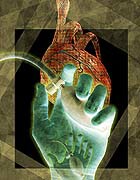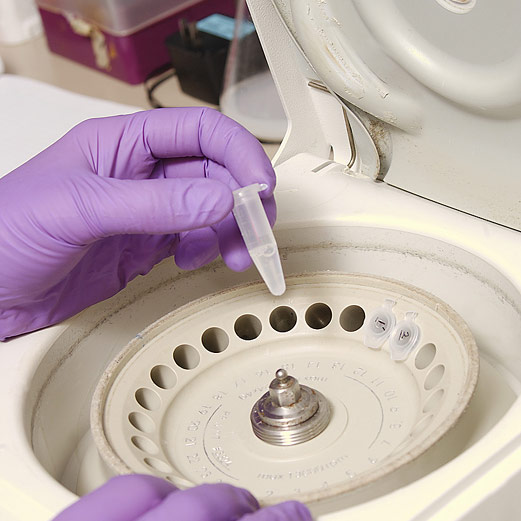
SUNDAY, Nov. 14 (HealthDay News) — Canadian researchers report that an implantable device called a resynchronization therapy-defibrillator helps keep the left side of the heart pumping properly, extending the life of heart failure patients.
Cardiac-resynchronization therapy, or CRT-D, also reduces heart failure symptoms, such as edema (swelling) and shortness of breath, as well as hospitalizations for some patients with moderate to severe heart failure, the scientists added.
“The whole idea of the therapy is to try to resynchronize the heart,” said lead researcher Dr. Anthony S.L. Tang, from the University of British Columbia in Vancouver.
It improves the heart’s ability to contract and pump blood throughout the body, he explained.
This study demonstrates that, in addition to symptom relief, the CRT-D extends life and keeps heart failure patients out of the hospital, Tang noted.
Tang added that patients will continue to need medical therapy and an implantable cardioverter-defibrillator (ICD) in addition to a CRT-D.
“We are saying people who are receiving good medical therapy and are now going to get a defibrillator, please go ahead and also do resynchronization therapy as well,” he said. “This is worthwhile, because they will live longer and be more likely to stay out of the hospital.”
The report is published in the Nov. 14 online edition of the New England Journal of Medicine, to coincide with a scheduled presentation of the findings Sunday at the American Heart Association annual meeting in Chicago.
Tang’s team randomly assigned 1,798 patients with mild or moderate heart failure to have a CRT-D plus an ICD implanted or only an ICD implanted.
Over 40 months of follow-up, the researchers found that those who received both devices experienced a 29 percent reduction in their symptoms, compared with patients who did not receive the resynchronization device.
In addition, there was a 27 percent reduction in deaths and heart failure hospitalizations among those who also had a CRT-D, they found.
More than 22 million people worldwide, including 6 million patients in the United States, suffer from heart failure. These patients’ hearts cannot adequately pump blood through the body. And although deaths from heart disease have fallen over the last three decades, the death rate for heart failure is rising, the researchers said. Treating heart failure is also expensive, costing an estimated $40 billion each year in the United States alone, they noted.
In cardiac-resynchronization therapy, a stopwatch-sized device is implanted in the upper chest to resynchronize the contractions of the heart’s upper chambers, called ventricles. This is done by sending electrical impulses to the heart muscle. Resynchronizing the contractions of the ventricles can help the heart pump blood throughout the body more efficiently.
A CRT-D can cost as much $35,000, or roughly $7,500 more than an ICD. About 650,000 Americans currently have either a CRT-D or an ICD, according to Medtronic spokeswoman Catherine Peloquin.
The study was partly funded by Medtronic of Canada, the maker of the device.
Dr. Arthur J. Moss, a professor of medicine at the University of Rochester School of Medicine and Dentistry, in Rochester, N.Y., and author of an accompanying journal editorial, said that “this is a major advance in the treatment and prevention of heart failure.”
CRT-Ds will be used much more in the future, Moss said. “It’s also going to be used for patients who are on the waiting list for heart transplants,” he said. “It’s also for patients who have impaired heart function and it will prevent them from developing heart failure.”
Commenting on the study, Dr. Gregg Fonarow, American Heart Association spokesman and a professor of cardiology at the University of California, Los Angeles, said that “cardiac-resynchronization therapy alone or together with an implantable cardioverter-defibrillator has previously been shown to reduce mortality and hospitalizations in patients with moderate to severe heart failure.”
Combined medical therapy and device therapy for patients with mild, moderate and severe heart failure can substantially improve survival and reduce the likelihood of hospitalization, he said. “The cumulative benefits offered to heart failure patients by evidence-based medication and device-based therapies are truly remarkable.”
The meeting also produced another potentially positive development in heart failure treatment with the release on Sunday of a trial of the drug eplerenone (Inspra), conducted in Europe and led by Dr. Faiez Zannad of University of Nancy in Nancy, France. This trial was also reported in the New England Journal of Medicine.
In the study, more than 2,700 patients with chronic heart failure but mild symptoms were randomly chosen to receive up to 50 milligrams of eplerenone daily or a placebo, in addition to recommended therapy.
The results were so positive — about 18 percent of patients on eplerenone dying from cardiovascular causes or being hospitalized for heart failure, versus almost 26 percent of those on a placebo — that the trial was stopped prematurely at 21 months, the researchers reported.
Eplerenone is from a class of drugs called aldosterone antagonists, which also includes the cheaper medication spironolactone, according to a journal editorial written by Dr. Paul W. Armstrong of the University of Alberta, in Edmonton, Canada.
Zannad and his team “have added real value to the management of heart failure” with the release of the study results, Armstrong wrote. However, he questioned whether the results would have been as positive in patients who already had pacemakers or implanted defibrillators (as is recommended in current heart failure guidelines). Armstrong also wondered if the additional cost of eplerenone makes it a second choice for patients if they respond well to the less expensive spironolactone.
More information
For more information on heart failure, visit the American Heart Association.

